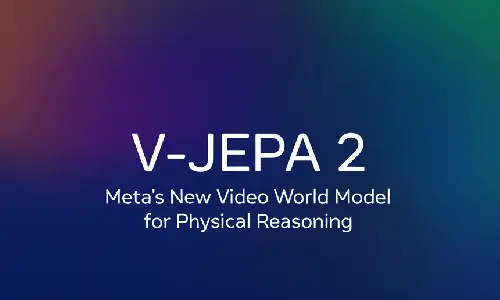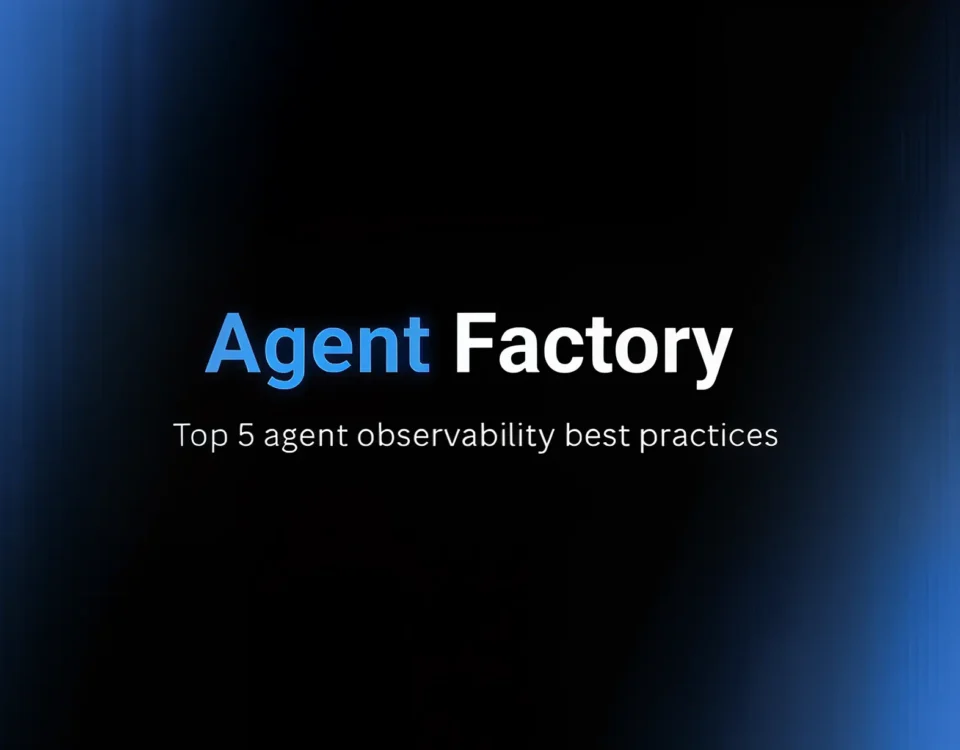V-JEPA 2| Meta’s New Video World Model for Physical Reasoning

What is a Headless CMS? | Benefits and Use Cases
June 12, 2025
OpenAI Launched o3-pro Model| A New Benchmark in AI Reasoning
June 18, 2025Meta’s latest breakthrough in artificial intelligence, V-JEPA 2, is redefining how machines understand and interact with the physical world. This innovative video-based world model leverages vast amounts of visual data to enable AI systems to predict, plan, and reason about real-world environments with remarkable precision. Designed to mimic human-like intuition about physics, this technology promises to transform industries like robotics, autonomous vehicles, and augmented reality. Let’s dive into what makes this model a game-changer and explore its potential to shape the future of AI.
What Is V-JEPA 2?
V-JEPA 2, or Video Joint Embedding Predictive Architecture 2, is Meta’s advanced AI model focused on physical reasoning through video analysis. Unlike traditional AI systems that rely heavily on labeled datasets, this model learns from unlabeled video footage, extracting patterns of object movement, human interactions, and environmental dynamics. By training on over a million hours of video, it builds an internal “world model”—a digital simulation of reality that allows it to anticipate how objects behave under various conditions.
This approach draws inspiration from how humans develop an intuitive sense of physics. For example, we instinctively know a ball thrown upward will eventually fall due to gravity. Similarly, this model learns to predict outcomes like a plate being placed on a table or a robot navigating unfamiliar terrain, making it highly adaptable for real-world applications.
The Evolution from V-JEPA
The first V-JEPA model, released in 2024, laid the groundwork for video-based learning, focusing on perception and contextual understanding. Its successor builds on this foundation by enhancing action prediction and planning capabilities. With 1.2 billion parameters, the new model is more efficient and robust, capable of zero-shot planning—meaning it can execute tasks in new environments without prior training. This leap forward aligns with Meta’s mission to achieve advanced machine intelligence that mirrors human learning processes.
How Does It Work?
At its core, V-JEPA 2 uses a Joint Embedding Predictive Architecture (JEPA), a framework pioneered by Meta’s Chief AI Scientist, Yann LeCun. The model consists of two key components: an encoder that processes raw video into semantic embeddings and a predictor that forecasts future states based on these embeddings. This process allows the AI to focus on high-level concepts rather than pixel-level details, making it computationally efficient.
Self-Supervised Learning
The model’s training relies on self-supervised learning, a technique that eliminates the need for human-annotated data. By analyzing millions of video frames, it identifies patterns such as how objects move, interact, or respond to external forces. For instance, it can infer that a spatula near a stove is likely used for cooking, enabling context-aware predictions. This method not only reduces training costs but also enhances the model’s ability to generalize across diverse scenarios.
Action-Conditioned Learning
In its second training phase, the model incorporates a small dataset of robot control actions (around 62 hours). This allows it to understand how an agent’s actions influence the environment, enabling closed-loop control for tasks like pick-and-place operations. By simulating possible actions and evaluating their outcomes, the AI can plan sequences to achieve specific goals, such as stacking objects or navigating obstacles.
Applications of V-JEPA 2
The potential applications of this technology are vast, spanning multiple industries where physical reasoning is critical. Here are some key areas where it’s poised to make an impact:
Robotics
In robotics, V-JEPA 2 enables machines to interact with unfamiliar objects and environments. For example, a warehouse robot can pick up a novel item and place it correctly without prior programming. Meta reports success rates of 65% to 80% for such tasks, highlighting the model’s reliability in dynamic settings. This capability could streamline automation in manufacturing, logistics, and home assistance.
Autonomous Vehicles
Self-driving cars require real-time understanding of their surroundings to navigate safely. The model’s ability to predict object trajectories and anticipate environmental changes makes it ideal for enhancing vehicle perception systems. By reasoning about cause-and-effect relationships, it can improve decision-making in complex traffic scenarios.
Augmented Reality
In augmented reality, contextual awareness is essential for creating immersive experiences. V-JEPA 2’s ability to interpret video streams in real time could power AR glasses that understand user environments, offering seamless interactions like virtual object placement or navigation assistance.
New Benchmarks for Physical Reasoning
Alongside the model, Meta introduced three benchmarks to evaluate AI systems’ ability to reason about the physical world through video:
- IntPhys 2: Tests whether models can identify physically implausible events, such as objects defying gravity.
- MVPBench: Assesses video-based question-answering under minimal changes, ensuring genuine understanding rather than reliance on dataset shortcuts.
- CausalVQA: Focuses on cause-and-effect reasoning, challenging models to predict outcomes and plan actions.
These benchmarks, available to the research community, encourage the development of more robust AI systems and foster collaboration in advancing physical reasoning capabilities.
Why V-JEPA 2 Matters
The significance of this model lies in its shift from data-heavy, generative AI approaches to efficient, predictive architectures. Traditional models often require extensive labeled data and computational resources, limiting their scalability. In contrast, V-JEPA 2’s self-supervised learning and focus on latent representations make it more resource-efficient, paving the way for scalable AI solutions.
Bridging the Gap to Human-Like Intelligence
By mimicking human intuition, the model brings AI closer to advanced machine intelligence (AMI). Its ability to “think before acting” enables goal-driven behavior, a hallmark of human reasoning. While it’s not yet at human-level performance, the gap is narrowing, with Meta’s ongoing research aimed at incorporating additional modalities like audio and tactile data.
Open-Source Collaboration
Meta’s decision to release V-JEPA 2 as an open-source model, along with its code and benchmarks, is a bold move to accelerate innovation. Available on platforms like GitHub and Hugging Face, it invites researchers and developers to experiment, refine, and build upon the technology. This collaborative approach could drive rapid advancements in embodied AI and real-world applications.
Challenges and Future Directions
Despite its achievements, V-JEPA 2 has limitations. It primarily operates in 2D video space, lacking the ability to simulate forces or dynamics as physics engines do. Additionally, its performance on complex, long-horizon tasks remains below human levels, indicating room for improvement. Meta acknowledges these gaps and suggests future models may integrate multi-modal data to enhance reasoning across timescales.
Expanding Temporal Horizons
One challenge is extending the model’s ability to predict over longer timeframes. Current capabilities excel in short-term reasoning, but real-world tasks like autonomous flight planning require long-term foresight. Meta’s research team is exploring ways to address this, potentially by incorporating memory mechanisms or hierarchical planning.
Ethical Considerations
As with any powerful AI, ethical implications must be addressed. Ensuring robots and autonomous systems operate safely and responsibly is critical, especially in high-stakes environments like healthcare or transportation. Meta’s emphasis on safety and collaboration with the research community is a step toward responsible development.
Conclusion
V-JEPA 2 represents a monumental step toward AI systems that understand and interact with the physical world as humans do. By leveraging video-based learning, self-supervised training, and predictive architectures, it offers a scalable, efficient solution for physical reasoning. From robotics to autonomous vehicles, its applications have the potential to reshape industries and enhance everyday life. With open-source access and new benchmarks, Meta is fostering a global effort to advance machine intelligence, bringing us closer to a future where AI can truly think before it acts.


